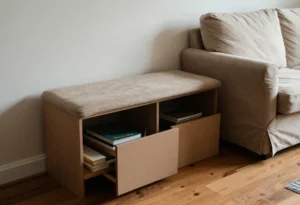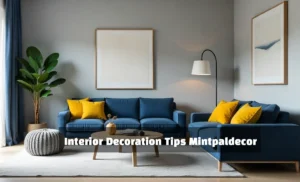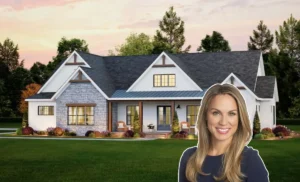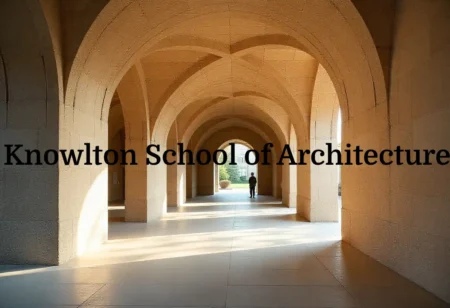In the realm of architectural design, the interplay between aesthetics and functionality is a delicate dance that architects must master to create spaces that stand the test of time. This article explores the art of balancing aesthetics and functionality, with a focus on sustainability. We will delve into strategies for achieving the perfect balance, the impact of design choices, and the role of innovative design in creating visually appealing yet functional spaces.
Aesthetics and Functionality: A Symbiotic Relationship
Aesthetics: Beyond Visual Appeal
Aesthetics play a crucial role in architectural design, going beyond mere visual appeal. It involves the overall sensory experience, from the choice of materials to the incorporation of sustainable design principles. Architects must have a deep understanding of design elements and create spaces that are not only visually pleasing but also enhance the overall user experience.
Functionality: The Backbone of Design
While aesthetics capture attention, functionality remains the backbone of any well-designed space. Achieving a balance between form and function requires thoughtful design decisions that consider the functionality of a space. The functionality and efficiency of a design ensure that it serves its purpose seamlessly.
Strategies for Balancing Aesthetics and Functionality
1. Fusion of Form and Function
One of the key strategies for balancing aesthetics and functionality lies in the fusion of form and function. Architects must make design choices that strike the right balance, ensuring that the design remains relevant and functional over time. This involves incorporating sustainable design elements that not only contribute to the aesthetics but also leave a lasting impact on the environment.
2. Sustainable Design: A Holistic Approach
Incorporating sustainable design principles is imperative in achieving the delicate balance between aesthetics and functionality. Architects must consider the environmental impact of their design choices and opt for sustainable materials. This approach not only ensures the longevity of the design but also contributes to the larger goal of sustainable development.
3. Harmonizing Natural Elements
Natural light is a powerful design element that can harmonize aesthetics and functionality. Architects should strategically utilize natural light to create visually pleasing spaces while enhancing the overall functionality. The interplay between natural elements and design decisions can lead to a perfect balance that stands out in architectural excellence.
4. Balancing Between Functionality and Aesthetics
Striking the right balance between functionality and aesthetics requires a thoughtful approach. Architects must consider the unique design of each space, incorporating aesthetics that align with the intended functionality. This balance ensures that the design meets its purpose while leaving a lasting impression on those who experience it.
The Impact of Design Choices: Ensuring Longevity
Architects must acknowledge the impact of their design choices on the longevity of a space. Thoughtful design ensures that the space remains relevant and functional, with the incorporation of sustainable practices. Computer-aided design provides opportunities for sustainable and functional design, allowing architects to make informed decisions that stand the test of time.
Innovation in Design: Meeting Modern Demands
Modern design necessitates a deep understanding of the complex interplay between aesthetics and functionality. The role of the architect extends beyond creating visually pleasing spaces; it involves creating functional designs that address the needs of the present and future. Innovative design practices offer unique opportunities for sustainable and functional solutions that meet the demands of a rapidly changing world.
Conclusion: Achieving the Perfect Balance
In conclusion, achieving the perfect balance between aesthetics and functionality in sustainable architectural design requires a holistic approach. Architects must incorporate sustainable design principles, make thoughtful design decisions, and embrace innovative practices. The delicate balance between form and function ensures that the design remains visually appealing, functional, and environmentally conscious.
As we navigate the realm of architectural design, let us embrace the art of balancing aesthetics and functionality. By doing so, we not only create spaces that stand out in their beauty but also contribute to a sustainable and harmonious future. The fusion of form and function lies at the heart of architectural excellence, leaving a lasting impression on the built environment.
FAQs
What are the three areas in which design can help in sustainability?
Design can significantly impact sustainability in three key areas. Firstly, in the design process, where architects and designers make choices that consider the balance between functionality and aesthetics. Secondly, in interior design, creating spaces that are not only aesthetically pleasing but also functionally efficient. Lastly, in home design, where the overall design must withstand the test of time by incorporating sustainable practices, ensuring the impact of the design contributes positively to the environment.
What are the principles of sustainable product design?
Sustainable product design adheres to principles that encompass the overall aesthetics and functionality. It involves the integration of various design elements, ensuring the design incorporates features that withstand the test of time. Achieving this delicate balance requires an understanding of the design process and an acknowledgment that design lies in creating products that serve their purpose while being aesthetically pleasing.
What is the basic concept in sustainable design?
At its core, the basic concept in sustainable design is achieving a delicate balance between aesthetics and functionality. This involves a design process that considers the impact of the design on both the environment and the user. Sustainable design goes beyond mere visual appeal; it encompasses creating designs that balance functionality with overall aesthetics, ensuring the design serves its purpose while incorporating design solutions that are environmentally conscious.
What are 5 example of sustainability?
Sustainability manifests in various forms. One example is in architectural aesthetics encompass, where buildings are designed to withstand the test of time by incorporating sustainable practices. Another example is in overall design principles, creating spaces that achieve a delicate balance between aesthetics and functionality. Additionally, sustainable design can be seen in home design, where structures are built with a focus on functionality and visual appeal, leaving a positive impact of the design on the environment.
What are some sustainable design strategies?
Sustainable design strategies involve a complex design approach that considers functionality as the backbone. Architects and designers must adopt innovative design practices to create spaces that are both aesthetically pleasing and environmentally conscious. Incorporating sustainable practices is crucial in achieving a balance between functionality and aesthetics. These strategies ensure that the overall design not only meets present needs but also contributes to a sustainable future, leaving a lasting impact of your design.
What are some examples of sustainable products design?
Sustainable product design is exemplified in products that seamlessly balance functionality with aesthetically pleasing features. Examples include eco-friendly furniture in interior design, where various design elements are crafted to achieve a delicate balance. Sustainable products also extend to those designed for home design, incorporating materials and features that withstand the test of time. These examples showcase how design must go beyond surface aesthetics, considering the overall aesthetics and long-term functionality of the product.
What is the basic concept of sustainable?
The basic concept of sustainable design lies in creating products, spaces, or structures that withstand the test of time while considering the impact of design choices on the environment. This involves incorporating sustainable practices throughout the design process to achieve a balance between functionality and aesthetics. Whether in interior design, home design, or architectural aesthetics, the fundamental idea is to create designs that are not only visually appealing but also functionally efficient, ensuring a positive overall impact of your design.
What are the principles of sustainable production?
Sustainable production principles center around acknowledging that functionality is the backbone of any well-designed product. It involves adopting advancement in manufacturing processes to create products that are both aesthetically pleasing and environmentally conscious. Sustainable production incorporates design solutions that go beyond the surface, ensuring the overall aesthetics align with the long-term functionality. This holistic approach to design impacts the entire production cycle, emphasizing the importance of incorporating sustainable practices to achieve a truly balanced and responsible design serves.





